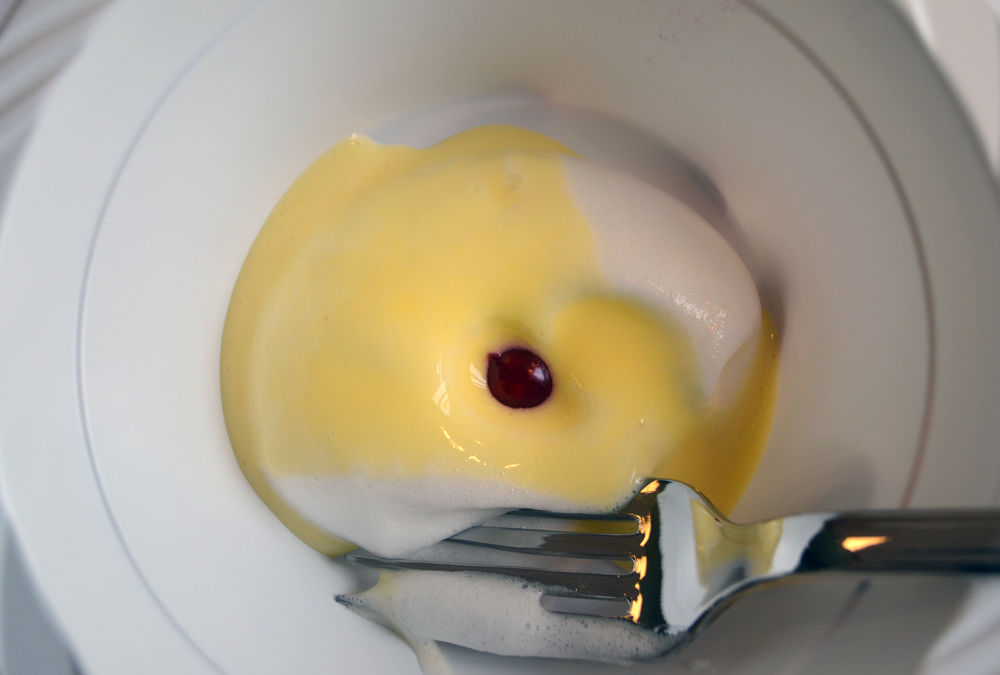Slow Food East End's Snail Supper brings out the Mardi Gras in all of Us
/How does a Potluck style themed dinner sound with like-minded food enthusiasts: a diverse group of friends and strangers who are passionate about good, clean and fair food for all? And what if I told you that the ingredients for each dish is locally sourced or perhaps in someone's own backyard? If I have piqued your interest these communal dinners on the East End of Long Island are called Snail Suppers, by Slow Food East End. This local chapter of Slow Food USA created these dinners to help fund ($15 members, $20 non-members) their Edible School Garden program while celebrating food as a cornerstone of pleasure, culture and community. “We currently have 27 schools on the East End that have applied for and received funding to develop a school garden program,” says Linda Slezak, Events Chair of Slow Food East End. The money provides the schools with garden equipment as well as a master gardener to teach and oversee the gardens and greenhouses all year round. For those of you not familiar with Slow Food, it is a global network of over 150,000 members in more than 150 countries whose mission is good, clean and fair food for all. Through a vast volunteer network of local chapters, youth and food communities, they link the pleasures of the table with a commitment to protect the community, culture, knowledge and environment.
Snail Suppers are themed and each dish tells a story about our food and beverage producers, and home cooks from the North and South Forks of Long Island. I think it is one of the most affordable and charitable ways to enjoy a locally inspired meal amongst interesting company.
Mardi Gras was the theme for this Snail Supper and with over thirty people in attendance there was plenty of Fat Tuesday to go around.
Kim Dyla of Southold, New York is a woman after my own heart. She made a Jalapeño cornbread with Cherokee white eagle corn that she grows on her property. She dries the corn on the cob, shucks, and then grinds into a cornmeal. Kim grows a variety of items on her property such as holy basil and kaffir lime because they are hard to find. “I’ve always been obsessed with food, cooking from scratch and getting as close to the source as I can with everything I eat,” says Kim. “When I told a Slow Food member that I made a cake from flour that I had ground from my own acorns, they thought that was cool." It does not get more local than that.
Photographs by Courtesy of Kim Dyla
Jeri Woodhouse, founder of A Taste of the North Fork made a cranberry-horseradish chutney for yam biscuits and a creamy shrimp risotto.
Earl Fultz, one of the founders of cHarrisa, a Moroccan-influenced condiment, made a muffin popover that encased a spicy cHarrisa meatball. Was a hot and tasty surprise.
Linda Slezak made a Browder's Bird chicken with preserved lemons. I was fortunate enough to get a jar of Linda's preserved lemons around the holidays and I cannot wait to try her recipe. She brines the chicken in salt for an hour and then air dries in the refrigerator. She then adds garlic, thyme sprigs, half a lemon squeezed and a generous amount of cracked pepper and convection bakes at 375 degrees for 1.5 hours. Once done, let the chicken rest for 5 minutes before cutting into pieces and top with the preserved lemon. This dish was so yummy and was one of my favorites. The preserved lemons were so good; lemony and briny, you just eat them whole.
I was so thrilled to see that someone made a Mardi Gras King Cake. This cake is similar to a coffee cake, ring-shaped with sugars in the royal colors of gold (power), green (faith) and purple (justice); this honors the three kings who visited Christ the child on the 6th of January. Traditionally, the King Cake is baked with a small plastic baby hidden inside (our version was a horseshoe), the person who gets the slice with the baby in it has to host the next party. To play it safe the person who made the Kings Cake pulled the trinket out. I guess she hosts the next Mardi Gras Snail Supper in 2015?
Eileen Duffy, Deputy Editor at Edible East End Magazine, hosted the Snail Supper and made two round loaves of her infamous sourdough bread that paired with my egg salad, made with Browder's Birds eggs and a Mecox Bay Dairy London broil, sigit cheddar and caramelized onion Muffuletta sandwich. Eileen’s sourdough bread is something to savor and this combined effort really made our dish something special.
I also made jalapeño cheddar corn muffins with homemade Cajun pork sausage. The cheddar cheese is from Mecox Bay Dairy and the pork sausage is from the meat and fat trimmings from the butcher class I attended at Mosner Family Brands.
There is something to be said for slowing down and discovering the simple pleasures of a shared meal amongst folks who care about what we put on our plates and how those daily choices shape the future of our environment and society. If you are interested in attending or hosting a Snail Supper, be sure to make your reservations at a cheetahs pace—these dinners book fast.
Recipe: Jalapeño Cheddar Corn Muffins with Homemade Cajun Pork Sausage
ingredients
Cajun Pork Sausage
- 2 pounds boneless pork cut in 1/2 inch pieces (any lean pork would work)
- 1/2 pound pork fat, cut into pieces
- 2 tablespoons paprika
- 5 garlic cloves, minced
- 1 small onion, minced
- 1 tablespoon cracked black pepper
- 1 tablespoon sea salt
- 1 teaspoon of cayenne pepper
- 2 tablespoons of paprika
- 1 teaspoon cumin
- 1 tablespoon dried thyme
- 1/3 cup of white wine
note: Store bought sausage is perfectly fine. 1 pound of ground sausage would work for 14 muffins. The recipe above is for 2.5 pounds and you can freeze half for later use.
Jalapeño Cheddar Corn Muffins
- 1 cup onion, finely chopped
- 1 cup all-purpose flour
- 1 cup yellow corn meal
- 1 tablespoon baking powder
- 1 teaspoon salt
- 2 eggs
- 1 cup whole milk
- 3 tablespoons butter, melted
- 2 tablespoons honey
- 2 cups cheddar cheese, grated
- 4 jalapeño peppers, finely chopped
- 2 tablespoons of olive oil
- Pinch of nutmeg
directions
Cajun Pork Sausage
- You will need a meat grinder with a coarse or fine die (I used the fine for this recipe). KitchenAid is my tool with a grinder attachment, however an old fashioned hand-crank meat grinder will work.
- Cut the pork (fat and lean meat) into 1.2 inch pieces. Place cut meat and fat in freezer for an hour. It is important that the meat is very cold before grinding.
- In the meantime prepare your spice bowl. Mince the garlic and onion. Then add all the spices and seasoning.
- Take meat out of freezer and grind using the fine die. Once in bowl add the spices and the wine. Fold the ingredients together until incorporated. Do not over mix. Then place the meat in the refrigerator to sit for up to 3 days. You can use the day after; however, I like to let the spices and wine marinade.
- When you are ready to make the muffins you want to do the sausage balls ahead of time. Simply roll on the palm of your hand a 1/2 teaspoon size ball and fry in a pan with a little olive oil, about 3-5 minutes until lightly brown. You will be making approximately 42 little sausage balls, three for each muffin.
Jalapeño Cheddar Corn Muffins
- Preheat oven to 400. Prepare a muffin pan with butter. Sauté the chopped onions in olive oil until translucent about five minutes.
- Combine the flour, cornmeal, baking powder, nutmeg and salt in a large mixing bowl.
- Together In another bowl beat the eggs, milk, honey and melted butter.
- Add the liquid mixture to the dry ingredients and fold until just moistened. Stir in the onions, 1.5 cups of the cheddar cheese, and the jalapeños.
- Pour the batter half way into each buttered muffin tin. Then place two sausage balls into each . Then top will a tablespoon of batter and one more sausage ball right in the middle. Sprinkle the top with the remaining cheese and Bake for 20 minutes or until crusty brown.











































































